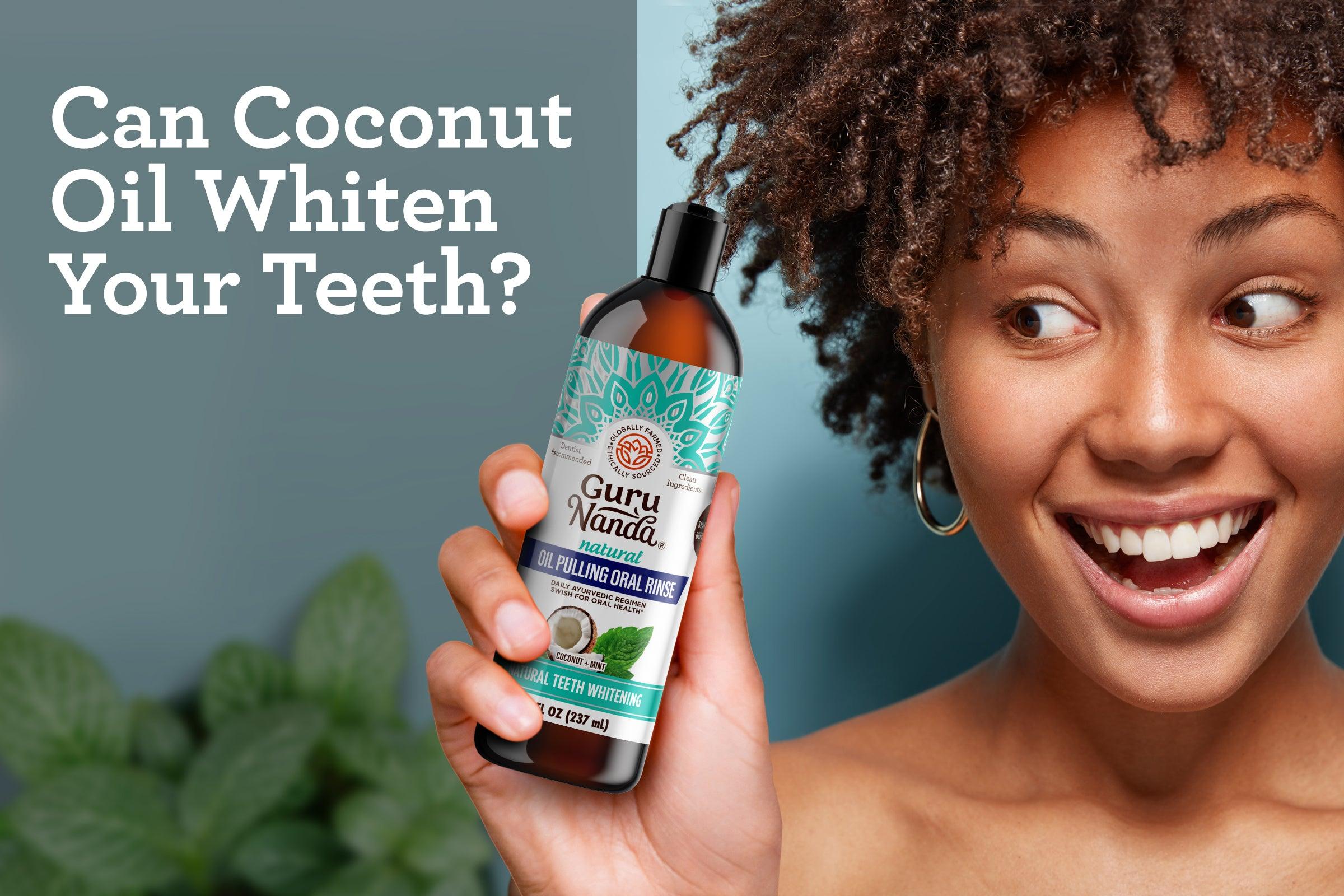You might be able to lighten your teeth at home using items found at the grocery store, though rigorous scientific support for many of these approaches is limited.
There are numerous choices when it comes to whitening your teeth.
Keep in mind that most commercial whitening products rely on chemical agents to bleach teeth, which may be a concern for some people.
If you desire brighter teeth but prefer to avoid harsh chemicals, this article outlines a variety of options that are more natural and generally considered safe.

Try oil pulling
Oil pulling is an ancient practice from India intended to promote oral health and remove toxins from the body.
The technique consists of swishing oil in your mouth to reduce bacteria, which can turn into plaque and make teeth appear yellow.
Coconut oil is commonly chosen because it tastes pleasant and offers several potential health benefits.
Coconut oil is also rich in lauric acid, a compound noted for its antimicrobial properties.
Research suggests that daily oil pulling with coconut oil can decrease oral bacteria, as well as plaque and gingivitis.
To perform oil pulling, place 1 tablespoon (15 ml) of coconut oil in your mouth and push the oil through your teeth. Coconut oil is solid at room temperature, so wait a few moments for it to melt if needed. Continue swishing for 15 to 20 minutes.
Make sure to spit the oil into a trash can or toilet rather than the sink, because it can solidify and clog your pipes.
Unlike many whitening techniques, coconut oil pulling doesn’t expose enamel to acids or other erosive ingredients, making it safe for daily use.
Brush with baking soda

Baking soda has mild whitening qualities, which is why it’s included in many toothpastes.
It acts as a gentle abrasive to help scrub away surface stains on teeth.
Additionally, baking soda creates an alkaline environment in the mouth that hinders bacterial growth.
This method won’t whiten your teeth overnight, but you should notice gradual improvement over time.
Research has shown that toothpastes containing baking soda are significantly better at reducing plaque, gum inflammation, and bleeding than toothpastes without it.
To try it, mix 1 teaspoon (6 grams) of baking soda with 2 teaspoons of water (5 ml) to form a paste and brush with it. You can use this a few times each week.
Use hydrogen peroxide
Hydrogen peroxide is a natural bleaching agent that also has antibacterial effects in the mouth.
It has long been used to disinfect wounds because of its ability to kill bacteria.
Many commercial whitening products include hydrogen peroxide, though in higher concentrations than what’s suitable for home use.
Studies have found that toothpastes with higher concentrations of hydrogen peroxide are more effective at whitening teeth after several weeks than those with lower concentrations.
Another study reported that a toothpaste containing hydrogen peroxide was superior to charcoal or highly abrasive toothpastes at reducing coffee-induced tooth discoloration.
However, safety concerns exist around hydrogen peroxide. While well-diluted solutions appear safe, strong concentrations or overuse can irritate gums and increase tooth sensitivity. There is also debate about whether high doses could be carcinogenic, though this has not been proven.
One simple way to use hydrogen peroxide is as a mouthwash prior to brushing. Use a 1.5% or 3% solution to minimize side effects.
The common drugstore concentration is 3%. You can dilute it to 1.5% by mixing equal parts peroxide and water.
Another option is to combine hydrogen peroxide with baking soda to make a paste. Mix 2 teaspoons (10 ml) of hydrogen peroxide with 1 teaspoon (6 grams) of baking soda and gently brush with the mixture.
Limit this homemade paste to a few times per week to avoid enamel erosion from overuse.
Eat crunchy fruits and vegetables

A diet rich in fruits and vegetables benefits both your body and your teeth. While they don’t replace brushing, crunchy raw produce can help scrub away plaque as you chew.
Strawberries and pineapple are two fruits sometimes touted for their whitening effects.
Strawberries
The trend of whitening teeth using a strawberry and baking soda blend has gained popularity, including among celebrities.
Supporters claim the malic acid in strawberries can help remove surface discoloration while baking soda buffs stains away. However, scientific backing for this approach is limited.
Although strawberries may help exfoliate enamel and make teeth look brighter, they are unlikely to remove deeper stains.
If you try this method, use it only occasionally to avoid potential damage.
To use it, mash a fresh strawberry, mix with baking soda, and brush the mixture onto your teeth.
Pineapple
Some believe pineapple can whiten teeth.
One study found that adding pineapple extract to hydrogen peroxide produced a greater whitening effect than hydrogen peroxide alone.
However, there’s no evidence that simply eating pineapple will achieve the same result.
Don’t overlook brushing and flossing
Though some discoloration comes with age, a lot of it is due to plaque buildup. Regular brushing and flossing help maintain white teeth by reducing oral bacteria and preventing plaque accumulation.
Toothpaste helps remove surface stains, and flossing gets rid of bacteria between teeth that lead to plaque. Routine dental cleanings also help keep teeth clean and bright.
Prevent stains before they form
While teeth naturally yellow as you get older, certain habits can reduce the likelihood of stains.
Limit staining foods and drinks
Coffee, red wine, soda, and dark berries are notorious for staining teeth.
That doesn’t mean you must avoid them entirely, but limit the time they’re in contact with your teeth. When possible, sip staining beverages through a straw to decrease direct contact with tooth surfaces.
Also, try to brush about 60 minutes after consuming these foods or drinks to lessen their effect on tooth color.
Additionally, avoid or reduce smoking and chewing tobacco, as both contribute to tooth discoloration (CDC).
Reduce sugar intake
For whiter teeth, cut down on sugar. Diets high in sugar promote growth of Streptococcus mutans, the main bacteria that causes plaque and gingivitis. Plaque can stain teeth, so removing it through brushing is essential.
After consuming sugary foods, wait 30 minutes to 1 hour before brushing, because the bacteria that digest sugar produce acids that temporarily soften enamel. Brushing too soon can wear enamel away.
Consume enough calcium
Some discoloration results from enamel erosion exposing the yellowish dentin beneath. Strengthening enamel helps teeth maintain a whiter appearance.
Calcium-rich foods like milk, cheese, and broccoli may help protect teeth from enamel erosion.
Other unproven approaches
There are additional natural whitening methods that lack strong scientific proof of safety or effectiveness.
Some of these unverified approaches include:
- Activated charcoal. Brushing with powdered charcoal is claimed to draw out toxins and remove stains, but evidence suggests it’s likely ineffective.
- Kaolin clay. Some people assert that brushing with clay helps remove stains.
- Fruit peels. Rubbing orange, lemon, or banana peels on teeth is sometimes claimed to whiten them.
- Apple cider vinegar. There’s no proof that using apple cider vinegar as a mouthwash whitens teeth; in fact, it can weaken enamel and increase the risk of decay.
Advocates assert these methods significantly whiten teeth, but they haven’t been scientifically evaluated, and their safety on tooth enamel hasn’t been established.
Frequently asked questions
What makes teeth appear yellow?
Several factors can cause teeth to lose their bright appearance.
Certain foods and drinks can stain the enamel, the outer layer of teeth. In addition, plaque buildup can make teeth look yellow.
Such staining can often be improved with regular cleaning and whitening measures.
In some cases, however, enamel erosion exposes the dentin underneath, which is naturally yellow. This gives teeth a more permanent yellow hue.
What is the most effective way to whiten teeth?
The best whitening approach depends on your goals, preferences, and budget.
Many of the approaches mentioned here can help, including oil pulling, using baking soda or hydrogen peroxide, maintaining a nutritious diet, and minimizing intake of staining foods and drinks.
How can you whiten teeth quickly?
There are many whitening products designed to work quickly.
These usually contain peroxide and can be used at home or applied professionally by a dentist.
Is there an alternative to brushing?
While practices like flossing and oil pulling are useful complements to oral care, brushing remains essential.
The American Dental Association (ADA) recommends brushing for two minutes twice daily with a soft-bristled toothbrush.
What are common brushing errors?
The ADA notes common mistakes include brushing too vigorously, not brushing long enough, brushing immediately after eating, and failing to replace a toothbrush often enough.
The takeaway
There are a number of natural strategies that can help brighten teeth, most of which work by gently removing surface stains.
However, dental professionals can offer stronger whitening treatments that may be more effective for significant discoloration; these typically involve bleaching. Overuse of any whitening approach can harm teeth.
Consult your dentist to discuss options and determine what’s safest and most effective for your situation.


















Leave a Reply
You must be logged in to post a comment.